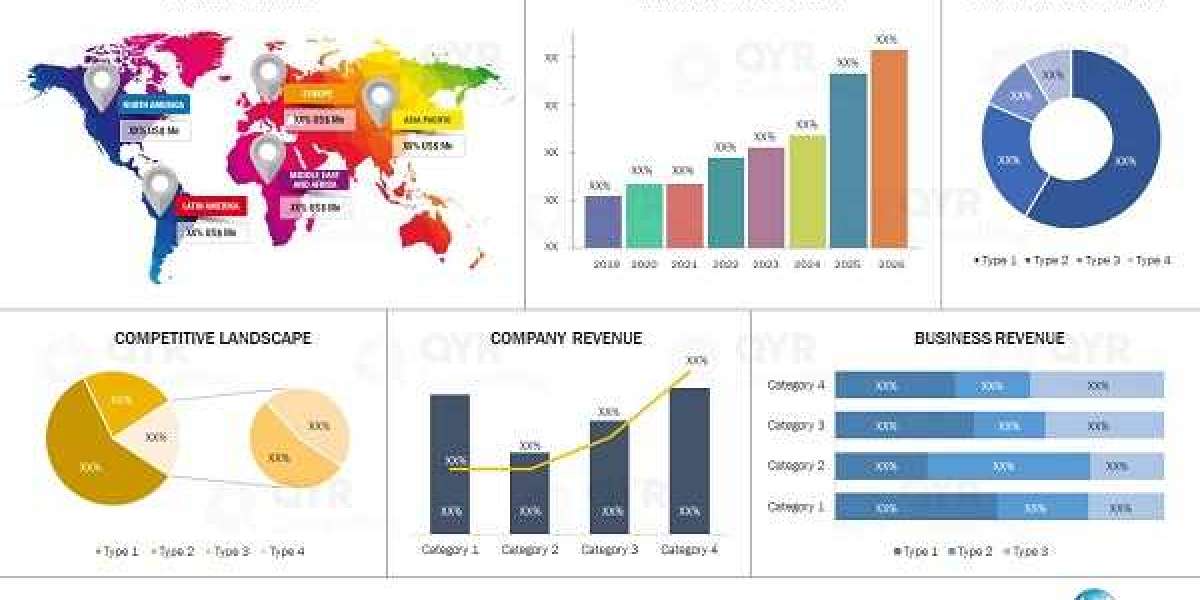The Global Mydriasis Treatment Market comprises pharmacological products designed to dilate the pupil for diagnostic and therapeutic procedures. Mydriatic agents such as atropine, tropicamide and cyclopentolate enable improved visualization of the retina during fundus examinations, facilitate cataract and glaucoma surgeries and aid in the diagnosis of diabetic retinopathy, macular degeneration and other ocular disorders. Mydriasis Treatment Market advantages of these treatments include rapid onset of action, extended duration of dilation, ease of administration and compatibility with existing ophthalmic devices. In recent years, the need for efficient mydriasis protocols has intensified owing to a growing geriatric population, rising incidence of ophthalmic disorders and increasing demand for outpatient eye care services. These products are essential tools in both ophthalmology clinics and mobile eye care setups. Market growth is also fueled by increasing awareness of preventive eye care, rising healthcare expenditure and enhanced distribution channels including online pharmacies. Segmentation by product type, end user and distribution channel offers detailed market insights to forecast demand and inform business growth strategies. Furthermore, innovations in controlled-release ocular drug delivery are streamlining dosing regimens, reducing systemic exposure and enhancing patient comfort.
The mydriasis treatment market is estimated to be valued at USD 665.0 Mn in 2025 and is expected to reach USD 935.7 Mn by 2032, growing at a compound annual growth rate (CAGR) of 5.00% from 2025 to 2032.
Key Takeaways
Key players operating in the Mydriasis Treatment Market are
- Alcon,
- Novartis AG,
- Bausch Lomb,
- Allergan plc,
- Pfizer Inc.,
- Santen Pharmaceutical Co., Ltd.,
- Sun Pharmaceutical Industries Ltd.
These market companies contribute significant RD investments to develop novel mydriatics and ocular delivery systems, strengthening their market share through strategic partnerships, product launches and geographic expansions. They leverage comprehensive market analysis and collaborate with ophthalmic research institutions to address market challenges and expand pipeline offerings. Their robust distribution networks and clinical trial pipelines underpin sustained market growth and reinforce competitive positioning in both developed and emerging regions.
In terms of market opportunities, the increasing incidence of eye diseases in aging populations offers considerable scope for new products and services. Market research indicates that tele-ophthalmology platforms integrated with mydriatic protocols can serve underserved regions, creating growth trajectories in Latin America, Asia Pacific and Africa. Additionally, combination therapies and single-use auto-injectors present attractive market opportunities by improving patient adherence and reducing administrative costs. Anticipated regulatory approvals for novel formulations represent untapped prospects for mid-sized and emerging players. Shifting market trends toward personalized medicine are further fueling innovation, as companies explore biomarker-driven drug selection and tailor dilation regimens according to individual risk profiles.
Technological advancements such as controlled-release ocular drug delivery systems are transforming treatment dynamics by maintaining therapeutic concentrations in the anterior chamber for extended periods. Micro-needle arrays, nanoparticle carriers and hydrogel-based inserts enhance drug bioavailability while minimizing systemic absorption, thereby improving safety profiles. These innovations align with broader market trends toward minimally invasive procedures, reducing hospital stays and streamlining clinical workflows. As part of the market forecast, adoption of smart patch technologies and AI-powered diagnostic tools is expected to accelerate, creating a paradigm shift in how mydriasis is achieved and monitored in routine ophthalmic practice.
Market Drivers
A primary market driver for the Mydriasis Treatment Market is the rising prevalence of ophthalmic disorders, notably diabetic retinopathy, glaucoma and age-related macular degeneration. According to industry share data, the number of patients requiring detailed ocular examinations is growing rapidly, driven by a global increase in diabetes and an expanding geriatric cohort. This surge amplifies demand for reliable mydriatic agents to enhance diagnostic accuracy and surgical outcomes. Furthermore, favorable reimbursement policies and streamlined regulatory pathways in key markets such as North America and Europe are incentivizing healthcare providers to adopt advanced dilation techniques. Another crucial driver is the escalating focus on outpatient and ambulatory eye care settings, where efficient mydriasis protocols reduce procedural time, lower overhead costs and elevate patient throughput. Growing investments in healthcare infrastructure and training of ophthalmic technicians further support market expansion by improving access to specialized dilation services.
Current Challenges in the Mydriasis Treatment Market
The Mydriasis Treatment Market faces a complex array of market challenges that stem from evolving regulatory frameworks and a shifting competitive landscape. Strict approval processes across major jurisdictions often delay product launches and heighten compliance costs, creating significant market restraints. Patient safety concerns related to ocular discomfort, systemic anticholinergic effects and variable responses can undermine physician confidence and slow adoption rates. Limited RD investments in novel mydriatic agents have constrained innovation, leaving portions of the patient population underserved and narrowing market segments.
Pricing pressure from generic alternatives and emerging biosimilars poses another formidable hurdle, squeezing profit margins for established players and making it harder to justify high development costs. Disparities in healthcare infrastructure and reimbursement policies across regions further complicate commercial execution, as payers may not recognize the full value of advanced formulations. Fragmented supply chains and intermittent raw-material shortages have disrupted distribution channels, impeding timely patient access. Moreover, the relative lack of comprehensive real-world evidence and insufficient market insights impede effective decision-making by manufacturers and providers. Competition for specialist attention in a broader ophthalmic arena further intensifies the struggle for share of voice. To navigate these pressures, companies must prioritize strategic partnerships, optimize clinical trial design, and deploy data-driven interventions while continuously monitoring market trends and regulatory changes.
SWOT Analysis
Strength:
The Mydriasis Treatment Market benefits from a solid clinical foundation rooted in time-tested pharmacological agents that demonstrate reliable pupil dilation and diagnostic efficacy. Established guidelines and treatment protocols ensure consistent adoption among ophthalmologists, bolstered by ongoing market research that validates therapeutic performance. A robust RD pipeline focusing on targeted receptor agonists and novel delivery systems further underscores the resilience of this segment in addressing evolving diagnostic needs.
Weakness:
1. Adverse event profiles such as transient ocular discomfort, blurred vision, and systemic anticholinergic effects can deter clinician preference and complicate patient compliance. These safety considerations contribute to a cautious approach to prescribing in certain high-risk populations.
2. Limited investment in next-generation mydriatic formulations has created gaps in product differentiation, making it difficult for companies to establish clear competitive advantages and maintain sustainable market share in saturated regions.
Opportunity:
1. Emerging non-invasive technologies, including controlled-release ocular inserts and nanoparticle-based eye drops, present opportunities to improve safety, enhance patient comfort, and stimulate additional market growth. Early market insights indicate a willingness among providers to adopt innovations that reduce dosing frequency.
2. Expansion into underserved emerging economies with growing ophthalmic infrastructure offers significant market opportunities, driven by rising healthcare expenditure and a focus on early diagnosis in aging populations.
Threats:
1. Patent expirations and the imminent arrival of lower-cost generic alternatives threaten to erode pricing power and compress profit margins for originator products, potentially leading to a commoditized market.
2. Heightened regulatory scrutiny and shifting reimbursement policies, particularly in regions with cost-containment initiatives, pose a risk to market stability and may delay the introduction of specialized therapies.
Geographical Value Concentration
In terms of value, the Mydriasis Treatment Market is predominantly concentrated in North America and Western Europe, where healthcare expenditure and diagnostic imaging infrastructure are among the highest globally. These mature regions account for a substantial share of industry revenue, underpinned by advanced hospital networks, favorable reimbursement frameworks, and extensive access to skilled ophthalmic specialists. Market segmentation in these territories highlights strong demand for premium mydriatic formulations and a robust pipeline of next-generation agents. Ongoing market insights reveal that continuous investment in clinical trials and strategic collaborations with academic centers reinforce regional dominance and ensure long-term leadership in this therapeutic category.
Fastest-Growing Region
Meanwhile, the Asia-Pacific region represents the fastest growing market for mydriasis treatments, driven by rapid urbanization, expanding healthcare infrastructure, and an increasing prevalence of ocular disorders in aging populations. Countries such as China, India, and Southeast Asian nations are witnessing double-digit growth rates as governments prioritize vision care initiatives and invest in diagnostic capabilities. Dynamic market drivers include a growing middle-class population with greater healthcare access and heightened awareness of preventive eye care. These factors, combined with tailored distribution strategies and targeted educational programs for clinicians, position Asia-Pacific as the primary growth engine for future business growth in this market.
Get this Report in Japanese Language: 散瞳治療市場
Get this Report in Korean Language: 동공확장증치료시장
Author Bio:
Priya Pandey is a dynamic and passionate editor with over three years of expertise in content editing and proofreading. Holding a bachelor's degree in biotechnology, Priya has a knack for making the content engaging. Her diverse portfolio includes editing documents across different industries, including food and beverages, information and technology, healthcare, chemical and materials, etc. Priya's meticulous attention to detail and commitment to excellence make her an invaluable asset in the world of content creation and refinement.
(LinkedIn- https://www.linkedin.com/in/priya-pandey-8417a8173/)











